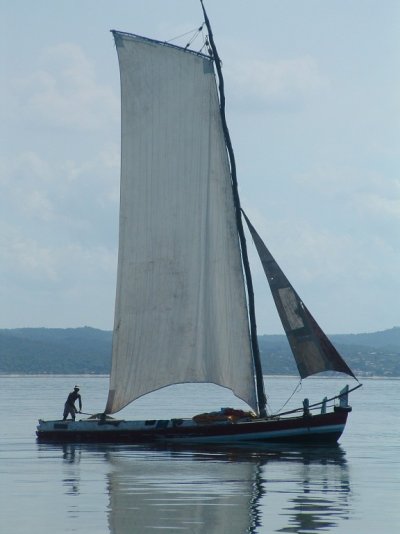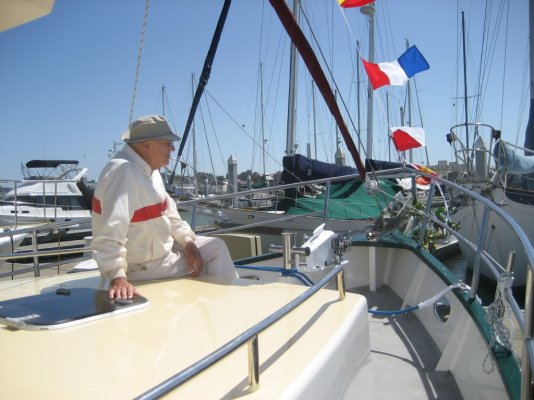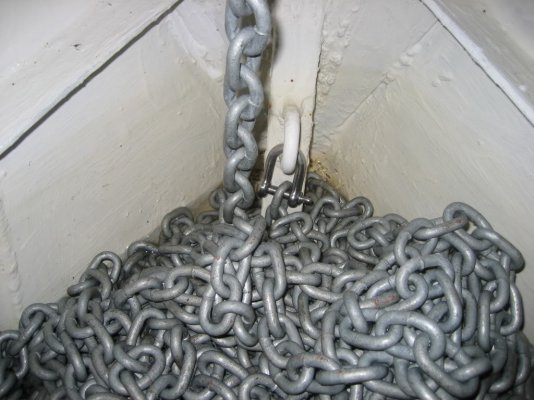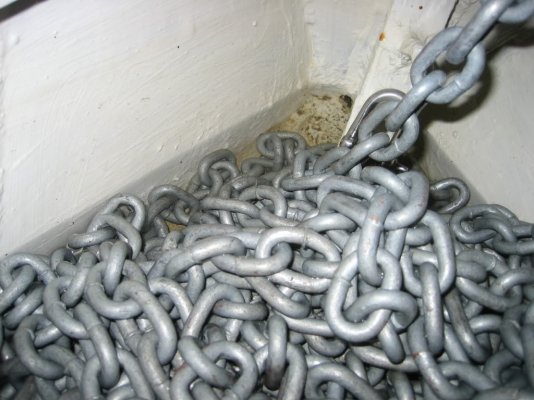A great spot to be living at.* We spent 2 plus months there in 2004 on our way north.* It was our first port in Brazil,* wonderful!* We also stopped in Fortaleza which had a large boat yard.**Where is*Rainha Jannota being built?Portuguese wrote:
<q>,,,,,Where in Brazil are you?
</q>
Well, I am in Salvador Bahia
12° 58' 43.22"S* 38° 28' 35.80"W
*
Welcome!
-- Edited by Portuguese on Friday 14th of October 2011 04:31:08 PM
You are using an out of date browser. It may not display this or other websites correctly.
You should upgrade or use an alternative browser.
You should upgrade or use an alternative browser.
Windlass, not a clue!!!
- Thread starter Portuguese
- Start date
The friendliest place on the web for anyone who enjoys boating.
If you have answers, please help by responding to the unanswered posts.
If you have answers, please help by responding to the unanswered posts.
Portuguese
Guru
David & Emily
That's the Baia de Todos os Santos. It is the place I mentioned that we can spend a full year without ever repeating a place. There 52 different mooring spots in the all bay with different attractions. The song you mention is a classic from this part of the country and it is older than I am. Yet, it stills brings emotions to people when is properly sung.
Larry:
Check out INACE Yachts. That is the shipyard you mention in Fortaleza. By the way, that's a lady business. It is run by an old Portuguese lady and her Brazilian born daughter. She is a Naval Engineer educated part in MIT.
My boat is being built 145 miles inland from Guaruja in Sao Paulo state. When Rainha Jannota is ready to launch, she will have to travel on a flat bed low boy from Campinas to Guaruja. It is nearly a week trip for 145 miles.
Yes. Every time I stay in Sao Paulo more than 12 hours, I get intense headaches. I was not made for that kind of a place.
That's the Baia de Todos os Santos. It is the place I mentioned that we can spend a full year without ever repeating a place. There 52 different mooring spots in the all bay with different attractions. The song you mention is a classic from this part of the country and it is older than I am. Yet, it stills brings emotions to people when is properly sung.
Larry:
Check out INACE Yachts. That is the shipyard you mention in Fortaleza. By the way, that's a lady business. It is run by an old Portuguese lady and her Brazilian born daughter. She is a Naval Engineer educated part in MIT.
My boat is being built 145 miles inland from Guaruja in Sao Paulo state. When Rainha Jannota is ready to launch, she will have to travel on a flat bed low boy from Campinas to Guaruja. It is nearly a week trip for 145 miles.
Yes. Every time I stay in Sao Paulo more than 12 hours, I get intense headaches. I was not made for that kind of a place.
Portuguese
Guru
Some pics of the Baia de todos os Santos and neighbor places. The norro de Sao Paulo picture, despite its name, is one of the corners of the Baia de Todos os Santos.
On one of the pictures youu'll see a trypical "escuna da Bahia" The boat made locally without any type of plans. You just telll the carpenter how long you want it,*thats. all!
-- Edited by Portuguese on Saturday 15th of October 2011 01:10:38 PM
-- Edited by Portuguese on Saturday 15th of October 2011 01:12:52 PM
On one of the pictures youu'll see a trypical "escuna da Bahia" The boat made locally without any type of plans. You just telll the carpenter how long you want it,*thats. all!
-- Edited by Portuguese on Saturday 15th of October 2011 01:10:38 PM
-- Edited by Portuguese on Saturday 15th of October 2011 01:12:52 PM
Attachments
-
 morro.jpg92.2 KB · Views: 110
morro.jpg92.2 KB · Views: 110 -
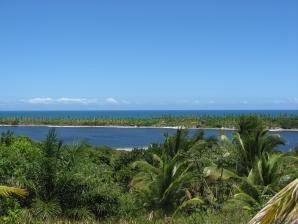 2_3586_md.jpg15.9 KB · Views: 316
2_3586_md.jpg15.9 KB · Views: 316 -
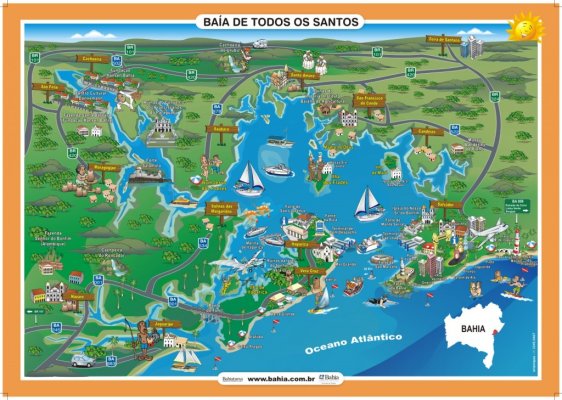 mapa_baia-de-todos1.jpg252.9 KB · Views: 118
mapa_baia-de-todos1.jpg252.9 KB · Views: 118 -
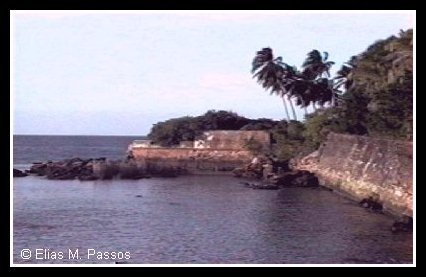 morro2f.jpg29.2 KB · Views: 114
morro2f.jpg29.2 KB · Views: 114 -
1280267755_107159091_4-aluguel-de-barcos-de-varios-tamanhos-em-salvador-bahia-servicos-1280267755.jp66.6 KB · Views: 72
-
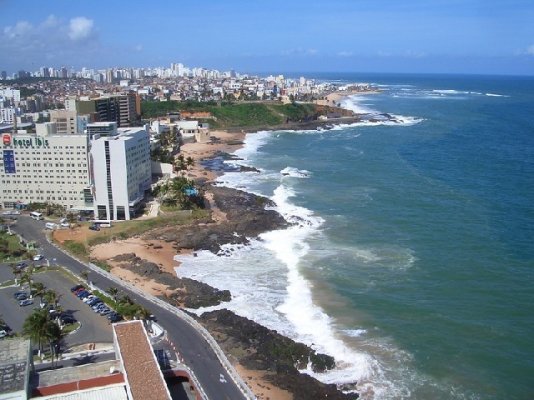 pictures_salvador.jpg103.7 KB · Views: 108
pictures_salvador.jpg103.7 KB · Views: 108
Portuguese
Guru
David
There are no Trawlers per say but you can charter a "escuna" with all conforts. There are also sailboats. But you can go around the bay on daily charters in escunas with music food and lots of "Caipinhas"
P.
There are no Trawlers per say but you can charter a "escuna" with all conforts. There are also sailboats. But you can go around the bay on daily charters in escunas with music food and lots of "Caipinhas"
P.
markpierce
Master and Commander
- Joined
- Sep 25, 2010
- Messages
- 12,557
- Location
- USA
- Vessel Name
- Carquinez Coot
- Vessel Make
- penultimate Seahorse Marine Coot hull #6
markpierce
Master and Commander
- Joined
- Sep 25, 2010
- Messages
- 12,557
- Location
- USA
- Vessel Name
- Carquinez Coot
- Vessel Make
- penultimate Seahorse Marine Coot hull #6
*I've a Bruce copy.* The most popular*with the 35-50 foot boats in my section of the marina is the CQR and second is the Bruce (some have both "armed" on the bow).* I've always liked the quick setting/resetting feature of the Bruce, particularly with tidal current changes.* I've read it's best to go heavy with the Bruce.* Mine is lighter than ideal, but for the near future I'll be anchoring in protected waters.Marin wrote:
Port--- One thing to keep in mind regarding the Bruce: in test after test over many, many years, the Bruce consistently has one of the lowest if not THE lowest holding power of all the designs tested. Yes, it sets fast in most bottoms and will reset fast--- sometimes. I don't know the kinds of bottoms, winds, etc. you anticipate encountering, but if holding power under higher pressures is going to be important, I suggest that you check into other anchor designs. While the Bruce is the most popular anchor among powerboaters in this area (PNW), which is one reason we initially bought one, boaters up here typically don't encounter winds at anchor that are all that strong. We don't get the big, exposed, windy anchorages one gets in the southwestern Pacific, for example. But, depending on the bottom makeup, when the wind does kick up, a Bruce will let go before a lot of other designs. This was our experience and has been the experience of a number of other boaters we know in the area.
-- Edited by markpierce on Saturday 15th of October 2011 04:24:37 PM
Attachments
Portuguese
Guru
Mark
You're correct. I am asking myself that same question for a number of reasons.
Why all chain? How many times am I going to anchor in a rock bottom?
Can I afford the weight in the bow with all that chain with anchor and a windlass proportional to that weight
In the Complete Anchoring Handbook by Alain Poiraud, Achim Ginsberg-Klemmt, and Erika Ginsberg-Klemmt, they very seldom mention the all chain set up. They do recommend a portion of chain equal to 3 times the lenght of the boat, and they have a dedicated chapter called: "The Best Anchor Rodr is a Combination of Chain and Rope". I started to read this book yesterday and I haven't yet got there yet but I will.
Apart from all that, if you get in trouble and you have to let the rode go, how do you cut chain? It is a lot easier to cut rope than chain in a Trawler or any other place
I better keep on reading!
Regards and Thanks
P.
You're correct. I am asking myself that same question for a number of reasons.
Why all chain? How many times am I going to anchor in a rock bottom?
Can I afford the weight in the bow with all that chain with anchor and a windlass proportional to that weight
In the Complete Anchoring Handbook by Alain Poiraud, Achim Ginsberg-Klemmt, and Erika Ginsberg-Klemmt, they very seldom mention the all chain set up. They do recommend a portion of chain equal to 3 times the lenght of the boat, and they have a dedicated chapter called: "The Best Anchor Rodr is a Combination of Chain and Rope". I started to read this book yesterday and I haven't yet got there yet but I will.
Apart from all that, if you get in trouble and you have to let the rode go, how do you cut chain? It is a lot easier to cut rope than chain in a Trawler or any other place
I better keep on reading!
Regards and Thanks
P.
Giggitoni
Guru
- Joined
- Jun 21, 2008
- Messages
- 2,092
- Location
- United States
- Vessel Name
- Mahalo Moi
- Vessel Make
- 1986 Grand Banks 42 Classic
We hose off the chain as we are hauling it in. We anchor most of the time and have very little mud in the locker, maybe a cup per year!
We attach rope to the end of the chain and tie the bitter end to a shackle inside the locker. The rope will extend outside to the windlass. That way we can cut the line in the event we need to leave quickly.
We attach rope to the end of the chain and tie the bitter end to a shackle inside the locker. The rope will extend outside to the windlass. That way we can cut the line in the event we need to leave quickly.
markpierce
Master and Commander
- Joined
- Sep 25, 2010
- Messages
- 12,557
- Location
- USA
- Vessel Name
- Carquinez Coot
- Vessel Make
- penultimate Seahorse Marine Coot hull #6
*To be done here.Giggitoni wrote:
*We attach rope to the end of the chain and tie the bitter end to a shackle inside the locker. The rope will extend outside to the windlass. That way we can cut the line in the event we need to leave quickly.
Attachments
*Well, you'll find a proponent of just about anything if you look long enough.* Haven't heard of the book you* mention, but in the book we use as our anchoring "bible,"* The Complete Book of Anchoring and Mooring by Earl Hinz, he doesn't play favorites but he is not shy about pointing out the advantages of an all-chain rode.* Which is what we have, which is what most powerboaters that I know or have observed anchoring in the PNW have.* It's advantages are more than just rocky bottoms.Portuguese wrote:
In the Complete Anchoring Handbook by Alain Poiraud, Achim Ginsberg-Klemmt, and Erika Ginsberg-Klemmt, they very seldom mention the all chain set up.
BUT.... if one has a planing boat like our friend's lobsterboat, then a lot of weight in the bow is not necessarily a good thing.* So all-chain is not the right answer for everybody.
As to dumping the chain in an emergency,* the bitter end of our chain is attached to a large eyebolt in the top of the anchor locker with a length of line that is long enough to appear on deck if we let all the chain out.* So if necessary, we can cut the line and be free of the anchor and chain.* I would like to think I'd have the presence of mind to attache one of our oversize fenders to the chain before letting it go so we could come back and retrieve it and the anchor later.* But the one time I've come within seconds of having to cut the line, the fender float idea did not occur to me.
As to muck and mud on our all-chain rode we have a very powerful salt water washdown pump courtesy of a previous owner.* Powered by a 1hp Westinghouse AC motor, it puts out about 26 gallons per minute (at the pump, not at the deck fitting).* So it does a great job of blasting the chain and anchor spotlessly clean as they come aboard.
-- Edited by Marin on Saturday 15th of October 2011 11:07:13 PM
Nomad Willy
Guru
There's little advantage to an all chain rode and those that support the opinion that it's better are probably adhering to the old saying if some is*good more's better. Lots of extra weight and extra money spent unnecessarily. Most (at least lots) of guys think heavy duty is better and chain is heavy so it must be better. And Port ...your book says it and so does Chapman's book more often regarded as the boating "bible" than any other book that a combination rode is best. If you require excess chain to make an anchor work you probably don't have a good anchor. Since we've had our last anchor talk binge I've been noticing the anchors that are hung on the bows of our TF boats and there's no doubt that I've seen more Bruce's than any other type. But if you need to carry an extra heavy anchor to make it work acceptably well you probably don't have a very good anchor. I've heard down through the years that the most efficient route to anchor performance is to put the weight into the anchor. If I had 100lbs of chain in my rode and replaced it w nylon and a 75lb Bruce anchor my 30' boat would probably be considerably more secure than it was before. Anchor tests provide good reading but what's much more important is what you know and think yourself. If you're really keen on anchors go back in the archives and read volumes of what we've already said.
markpierce
Master and Commander
- Joined
- Sep 25, 2010
- Messages
- 12,557
- Location
- USA
- Vessel Name
- Carquinez Coot
- Vessel Make
- penultimate Seahorse Marine Coot hull #6
The most efficient rode probably consists of*chain of a low multiple of the boat length plus sufficient nylon line to create sufficient scope.* My all-anchor rode of 150-feet is short but adequate for the 10-to-30-foot-depth anchorages typical in my area.* If anchoring in deeper waters, I'd add*a lot of nylon rope.
-- Edited by markpierce on Sunday 16th of October 2011 12:52:32 AM
-- Edited by markpierce on Sunday 16th of October 2011 12:52:32 AM
Tidahapah
Guru
- Joined
- Oct 7, 2007
- Messages
- 1,859
- Location
- Australia
- Vessel Name
- Flora
- Vessel Make
- Timber southern cray boat
Guys,
I will allways go for all chain for main anchor.
Having sat at anchor in the Great Barrier Reef riding out 35/45 knots for 4/5 days at a time I am happier with all chain due
to less chance of chafe damage /failure.
Gotta plan for the un expected at all times.
Some years ago a young friend of mine with a professional reef fishing boat was doing the same thing as above , nearly lost the boat
during the night, stopped to see me before leaving the reef to swap a few things over and said "as soon as I get into Gladstone I am getting all chain on board, that was too close"
I will allways go for all chain for main anchor.
Having sat at anchor in the Great Barrier Reef riding out 35/45 knots for 4/5 days at a time I am happier with all chain due
to less chance of chafe damage /failure.
Gotta plan for the un expected at all times.
Some years ago a young friend of mine with a professional reef fishing boat was doing the same thing as above , nearly lost the boat
during the night, stopped to see me before leaving the reef to swap a few things over and said "as soon as I get into Gladstone I am getting all chain on board, that was too close"
sunchaser
Guru
- Joined
- Apr 9, 2008
- Messages
- 10,195
- Location
- usa
- Vessel Name
- sunchaser V
- Vessel Make
- DeFever 48 (sold)
I agree with Eric that an all chain rode has no technical advantage when measured by holding power. On a 30' vessel like Willy weight can enter into the analysis as well. However, on larger trawlers there is no downside to an all chain rode. As Tidapah and others say, the chafing*issues favors chain. All chain is easy to clean whereas rope remains damp and an mold/odor issue.
On my Searays I used only 5' of chain on the rode to keep the deck from getting scratched and the weight to a minimum. Ditto some larger*well known cross gender trawlers that lack heavy SS anchor related deck fittings on their sculpted foredecks.
On my Searays I used only 5' of chain on the rode to keep the deck from getting scratched and the weight to a minimum. Ditto some larger*well known cross gender trawlers that lack heavy SS anchor related deck fittings on their sculpted foredecks.
Here is one observed difference between all chain and a combination rode. Two similar size boats, ours and another cruiser. Anchored in the same place. Hit by the same wind of perhaps 20 knots with slightly higher gusts. When the wind came up, and particularly when the guts hit, the other fellow's combination rode--- about 20' of chain and the rest nylon line, was stretched absolutely taunt between his bow roller and his anchor. Thus the angle of pull on his anchor was basically a line between his bow roller and the shank of the anchor. At the same time, our heavy all chain rode sagged deeply down into the water even in the gusts and the angle of pull on the shank of our anchor was probably half of his.
While in this instance both anchors held with no problems in the firm mud bottom, had the bottom been less firm, or had the fetch been longer to allow larger waves to form and pitch the boats up and down, it's possible that his anchor could have been worked out with that higher angle of pull than ours. While I had always been a proponent of all chain rode (in a boat like ours) due to what I'd been told and what I'd read, this one instance confirmed to me for good that--- for a boat that can carry it--- an all chain rode has at least one advantage over a combination rode.
I agree with Tom that all-chain vs combination does't make much or maybe any difference to how an anchor sets or holds under normal conditions (however one defines "normal" in anchoring). But when the wind kicks up, unless it's so strong that it takes all the catenary out of the chain, the all-chain will reduce the angle of pull on the anchor shank, which MIGHT make a difference under some circumstances in keeping the anchor set. One thing I believe for sure, and that is if an all-chain rode is too heavy for one's boat design, then I would go up a two or three anchor sizes to make up for the inability to carry all chain. An oversize anchor will still weigh considerably less than 200-300 feet of chain, so the boat's performance and trim should not be affected, but it will be that much harder to lever the anchor out of the bottom with a bar-tight combination rode at a high angle of pull.
-- Edited by Marin on Sunday 16th of October 2011 11:23:04 AM
While in this instance both anchors held with no problems in the firm mud bottom, had the bottom been less firm, or had the fetch been longer to allow larger waves to form and pitch the boats up and down, it's possible that his anchor could have been worked out with that higher angle of pull than ours. While I had always been a proponent of all chain rode (in a boat like ours) due to what I'd been told and what I'd read, this one instance confirmed to me for good that--- for a boat that can carry it--- an all chain rode has at least one advantage over a combination rode.
I agree with Tom that all-chain vs combination does't make much or maybe any difference to how an anchor sets or holds under normal conditions (however one defines "normal" in anchoring). But when the wind kicks up, unless it's so strong that it takes all the catenary out of the chain, the all-chain will reduce the angle of pull on the anchor shank, which MIGHT make a difference under some circumstances in keeping the anchor set. One thing I believe for sure, and that is if an all-chain rode is too heavy for one's boat design, then I would go up a two or three anchor sizes to make up for the inability to carry all chain. An oversize anchor will still weigh considerably less than 200-300 feet of chain, so the boat's performance and trim should not be affected, but it will be that much harder to lever the anchor out of the bottom with a bar-tight combination rode at a high angle of pull.
-- Edited by Marin on Sunday 16th of October 2011 11:23:04 AM
Nomad Willy
Guru
I agree Marin but don't understand the last sentence.
FF
Guru
- Joined
- Oct 12, 2007
- Messages
- 22,552
In "normal" overnight conditions , chain is mostly needed where coral or rocks will eat rope.
The price is the washing drill to keep the mud stench down.. but the chain will put itself away.
When it starts to blow the chain is fine till the catinary is removed in the breeze , and the puffs begin to snatch the chain bar tight .
Lots of loading , a rode weight or more chain is required.
A bit of chain with a nylon rode has the huge advantage of stretching IF the operator selected the correct match of line.
Frequently the nylon is far too heavy for O'nite so will stretch very little, requiring a larger anchor.
Rope will require hand work to stow , our choice is a large figure 8 on deck, so the anchor can be set instantly.
The price is the washing drill to keep the mud stench down.. but the chain will put itself away.
When it starts to blow the chain is fine till the catinary is removed in the breeze , and the puffs begin to snatch the chain bar tight .
Lots of loading , a rode weight or more chain is required.
A bit of chain with a nylon rode has the huge advantage of stretching IF the operator selected the correct match of line.
Frequently the nylon is far too heavy for O'nite so will stretch very little, requiring a larger anchor.
Rope will require hand work to stow , our choice is a large figure 8 on deck, so the anchor can be set instantly.
jleonard
Guru
- Joined
- Jun 25, 2008
- Messages
- 5,063
*Yes I agree there is no technical advantage, however, IF you have ever anchored in tight places such as Block Island you will see the advantage of all chain. Overcrowded anchorage, idiots who run their boats in 6 to 10 ft of water and have absolutely no clue where your anchor is, there is an advantage to all chain. Just ask the guys who get their line rode*clipped off.sunchaser wrote:
I agree with Eric that an all chain rode has no technical advantage when measured by holding power. On a 30' vessel like Willy weight can enter into the analysis as well. However, on larger trawlers there is no downside to an all chain rode.
I see it almost every year. That is why we went to all chain.
*
Nomad Willy
Guru
Jay,
Absolutely correct and here in SE Alaska most of our anchorages are small. Almost all the fishermen have huge anchors and heavy chain on the anchor end of the rode. Mostly they don't set their anchors and they sit all night in the same spot where they dropped their anchor. But even a very large anchor will drag, particularly the anchors fishermen use and I've heard quite a few stories about dragging anchors in a blow from fishermen. With propping your boat or anchoring there's really only one way of doing the job to the best of your ability and that's the correct way. You can apply the some's good more's better to anchor chain but there's only one best way and that's a good combination rode. Dispite what all the guys on your dock say. Of interest and directly applicable to this rode question is something I heard from a fisherman just last night * ....went something like this but these are my words ..."here we all are tucked in nicely in Brockman Cove and in comes Abercombi feed'in out several hundred feet of anchor line swing'in all over the place". Well if it blew 60 or so during the night Abercombi may be the only one not lay'in on his side on the beach. Making fishermen look like fools is NOT the intent of this post as they are VERY much on top of the weather situation always and seldom go astray. On boats bigger and a bit heavier than mine all chain will work just fine w a good anchor and 4 to 1 scope. But "wet" boats and big sea story comments like "hey you should'a seen it. Solid green water over the fwd windows like we was in a fish bowl" may be at least partly the result of too much heavy ground tackle right up on the bow. All chain can lead to such experiences and stories.*
Absolutely correct and here in SE Alaska most of our anchorages are small. Almost all the fishermen have huge anchors and heavy chain on the anchor end of the rode. Mostly they don't set their anchors and they sit all night in the same spot where they dropped their anchor. But even a very large anchor will drag, particularly the anchors fishermen use and I've heard quite a few stories about dragging anchors in a blow from fishermen. With propping your boat or anchoring there's really only one way of doing the job to the best of your ability and that's the correct way. You can apply the some's good more's better to anchor chain but there's only one best way and that's a good combination rode. Dispite what all the guys on your dock say. Of interest and directly applicable to this rode question is something I heard from a fisherman just last night * ....went something like this but these are my words ..."here we all are tucked in nicely in Brockman Cove and in comes Abercombi feed'in out several hundred feet of anchor line swing'in all over the place". Well if it blew 60 or so during the night Abercombi may be the only one not lay'in on his side on the beach. Making fishermen look like fools is NOT the intent of this post as they are VERY much on top of the weather situation always and seldom go astray. On boats bigger and a bit heavier than mine all chain will work just fine w a good anchor and 4 to 1 scope. But "wet" boats and big sea story comments like "hey you should'a seen it. Solid green water over the fwd windows like we was in a fish bowl" may be at least partly the result of too much heavy ground tackle right up on the bow. All chain can lead to such experiences and stories.*
*If one has a planing boat or a boat that will be adversely affected by the weight of an all-chain rode in the bow, using an oversize anchor with a combination rode (mostly nylon) will not put as much weight in the bow as an all-chain rode and a "properly" sized anchor.* Or put another way, an oversize anchor will not put as much additional weight up forward as putting 200'-300' of all-chain rode up there.nomadwilly wrote:
I agree Marin but don't understand the last sentence.
So using a heavier anchor to reduce the risk of levering it out with a stretched-tight combination rode will be less of a weight penalty than carrying an all-chain rode to accomplish the same thing with a smaller anchor.
Nomad Willy
Guru
Hi Marin,
Excess weight is always bad unless it is very low and used as ballast.
I'm not saying you should switch to a combination rode or that you should use an oversized anchor. I used the big anchor analogy to show that if you wanted to use weight to your advantage there is a more effective way to do it. But if I had your boat I'd install a combination rode.
Excess weight is always bad unless it is very low and used as ballast.
I'm not saying you should switch to a combination rode or that you should use an oversized anchor. I used the big anchor analogy to show that if you wanted to use weight to your advantage there is a more effective way to do it. But if I had your boat I'd install a combination rode.
*Why?* Weight makes no difference to a GB.* I've had three large-ish adults go to the bow when I've been driving to take pictures of porpoises and the bow did not come down enough to even be discernible to me.* And I looked because I was curious what the weight up there would do.* The horizon stayed right where it was relative to the pulpit rail.* The more weight you put in a GB, the better it ridesnomadwilly wrote:But if I had your boat I'd install a combination rode.
BaltimoreLurker
Curmudgeon
- Joined
- Oct 8, 2007
- Messages
- 2,775
- Location
- USA
- Vessel Name
- Moon Dance
- Vessel Make
- 1974 34' Marine Trader Sedan
I'm not much worried about chafe on coral reefs in the Chesapeake.* So, 35' of chain on my 34' boat seems to work just fine.* When I anchor that sucker never moves.* But then again, I've never tried to ride out 35kt - 45kt winds for days on end either.* If so, I might have a different opinion.
Another factor is the depth of water you anchor in. Out here, 30 feet is considered a shallow anchorage. We anchor in 50 or 60 feet of water at times and I know people who when traveling up the Passage to SE Alaska had to anchor in almost 100 feet of water. It's my understanding that anchorages in the Chesapeake and along the ICW are usually quite shallow. If you're anchoring in 10-15 feet of water, your 35' of chain is going to comprise a significant portion of the rode you have out.
jleonard
Guru
- Joined
- Jun 25, 2008
- Messages
- 5,063
*One of my marina friends did a repower on his 30 Sea Ray going from gas to diesel. The 200 hp Yanmars could not get to rpm until he removed 100 feet of chain out of his anchor locker. It was that weight difference that finally allowed him to get up on plane and get proper RPM.Marin wrote:
*If one has a planing boat or a boat that will be adversely affected by the weight of an all-chain rode in the bow, using an oversize anchor with a combination rode (mostly nylon) will not put as much weight in the bow as an all-chain rode and a "properly" sized anchor.* Or put another way, an oversize anchor will not put as much additional weight up forward as putting 200'-300' of all-chain rode up there.
*
BaltimoreLurker
Curmudgeon
- Joined
- Oct 8, 2007
- Messages
- 2,775
- Location
- USA
- Vessel Name
- Moon Dance
- Vessel Make
- 1974 34' Marine Trader Sedan
I sometimes wonder if the anchor is doing much at all, what with 35' of chain laying in the mud.*Marin wrote:
*If you're anchoring in 10-15 feet of water, your 35' of chain is going to comprise a significant portion of the rode you have out.
I always let out at least enough rode until I get to the nylon.
markpierce
Master and Commander
- Joined
- Sep 25, 2010
- Messages
- 12,557
- Location
- USA
- Vessel Name
- Carquinez Coot
- Vessel Make
- penultimate Seahorse Marine Coot hull #6
To address the problem of water coming into the chain locker from the drain when going over six knots, I've decided to have a fiberglass tray installed about 10-12" above the anchor-locker floor, thus raising the top of the drain which presently is about 6-8" above the waterline.
-- Edited by markpierce on Monday 17th of October 2011 10:19:32 PM
-- Edited by markpierce on Monday 17th of October 2011 10:19:32 PM
Attachments
FF
Guru
- Joined
- Oct 12, 2007
- Messages
- 22,552
That locker looks far too wide , it seems the chain could pile up and then tumble.
Skeene's has the dimensions for a locker that does not require clearing chain piles to drop the anchor after a few bumpy waves.
Skeene's has the dimensions for a locker that does not require clearing chain piles to drop the anchor after a few bumpy waves.
Similar threads
- Replies
- 17
- Views
- 3K
- Locked
- Replies
- 3
- Views
- 2K
Latest posts
-
-
-
-
-
-
-
-
-
Best Android Tablet to Run Navionics App?
- Latest: Portage_Bay
-



